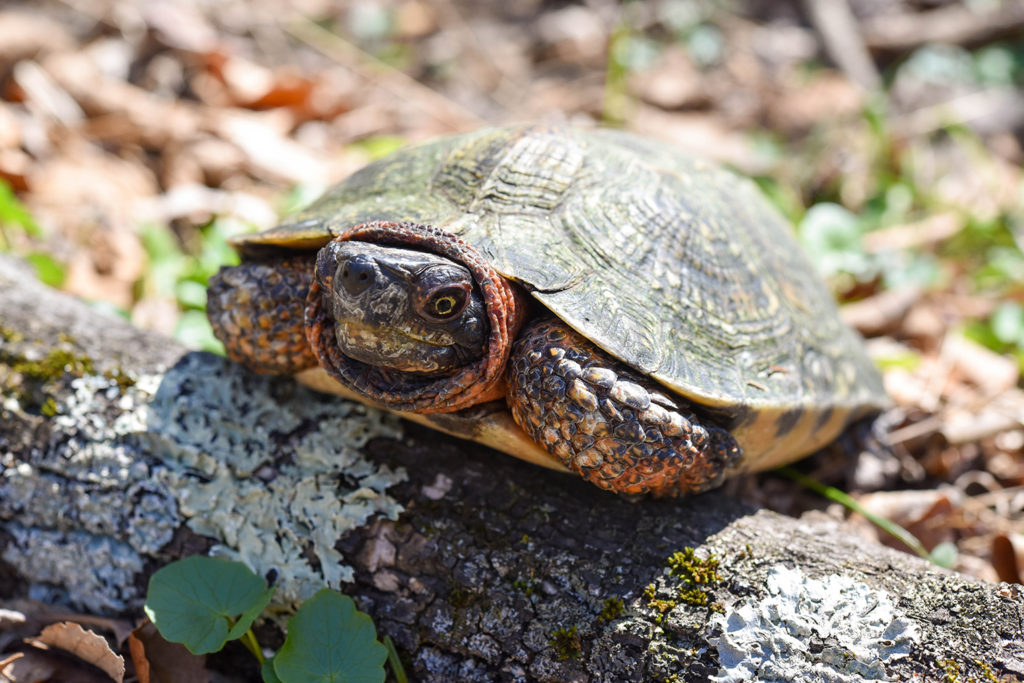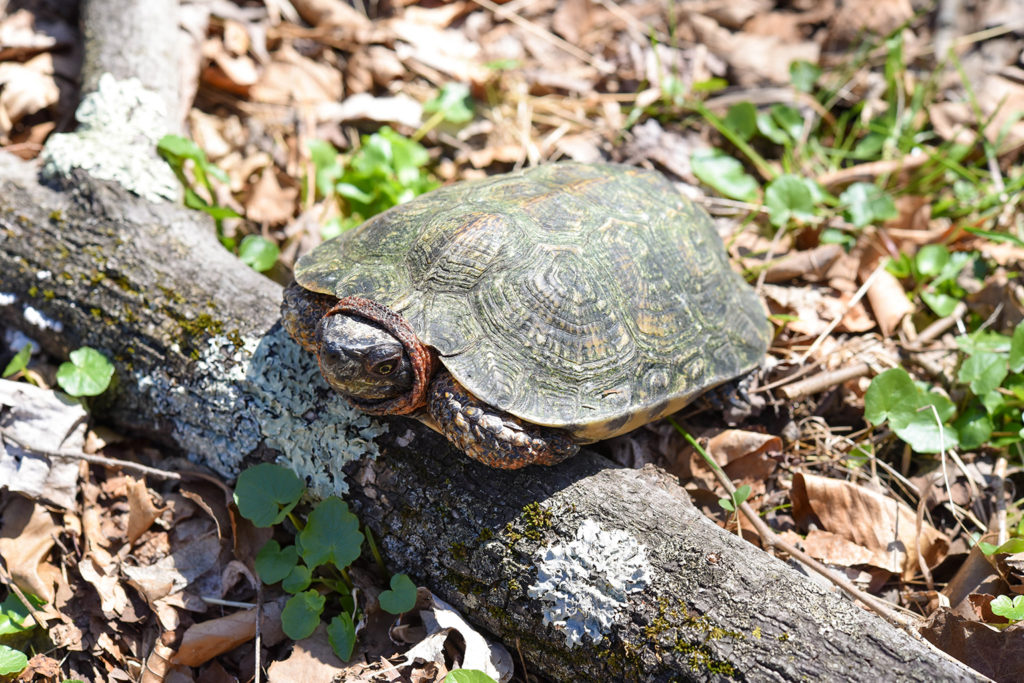Overview
“Where I live”
Wood turtles are native to southeastern Canada and the northeastern U.S., including Maryland. They usually live in woodlands bordering open meadows or pastures, and inhabit slow-moving freshwater streams and rivers.
“How I live there”
Wood turtles are most active during the daylight hours. They spend much of their time basking on logs or on the bank of a river or stream. They are relatively solitary animals that tend to bask and feed alone. Males establish dominance hierarchies and may show aggression toward each other (chasing, biting, butting) in or out of breeding season.
Wood turtles forage for food, both on land and in the water. They eat a variety of plant and animal matter. They feed on ripe fruit, berries, and mushrooms, as well as fish, snails, slugs, insects, and tadpoles. They never venture far from water, but may roam several hundred yards up and down the bank of their home river or stream.
Depending on how southerly their location, wood turtles become active any time from late March to early May. As cold weather sets in, usually by late October, wood turtles bury themselves in mud or debris at the bottom of a river or stream, or occupy a burrow or lodge in the side of a stream bank, and hibernate through the winter.
“Making my mark”
Wood turtles have burnt orange skin and brown carapaces (top shells) that look sculpted. Males can be distinguished from females by their much longer tails. They also have more curved claws than females.
Raising Young
Wood turtles mate in the spring, soon after they leave their overwintering sites and become active again. Some also mate in late autumn. A few weeks after mating, females migrate overland to find suitable nesting sites.
Females dig their nests in sandy or soft soil, including gravel banks, roadsides, fields, and meadows. The nests can be up to six inches deep. Each female lays 6-8 eggs on average, and will cover them over with substrate, then tamp down the nest with her plastron (bottom shell). Once smoothed over, the nest is at least somewhat protected from the elements and from potential predators. She then leaves the nest and plays no part in raising her young.
Despite a mother turtle’s best efforts at concealment, most wood turtle eggs are lost to predation. Those few that survive the incubation phase will hatch in about 67 days. Newly hatched wood turtles are brown or gray and gradually develop their burnt orange skin tone. They make their way somehow to the shallows of small streams and remain there for the first few years of life, feeding mainly on invertebrates.
“What eats me”
Wood turtle nests are raided – and the eggs taken – by many different predators, including raccoons, foxes, and skunks.
Conservation
Wood turtles are in decline throughout their relatively small geographic range, and have become uncommon in all parts of their range. They are threatened mainly by habitat loss, fragmentation, and degradation that results from building and logging practices. Wood turtles also are taken illegally as pets, and removing even one wood turtle from the wild impacts its local population significantly, and negatively.
Taxonomy
- Kingdom: Animalia
- Phylum: Chordata
- Subphylum: Vertebrata
- Class: Reptila
- Order: Testudines
- Family: Emydidae
- Genera: Glyptemys
- Species: insculpta




